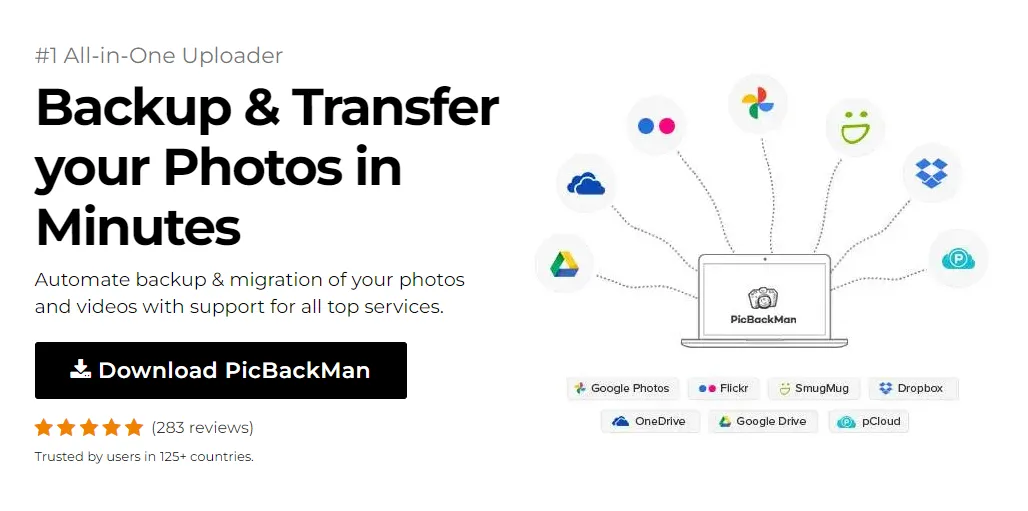
Why is it the #1 bulk uploader?
- Insanely fast!
- Maintains folder structure.
- 100% automated upload.
- Supports RAW files.
- Privacy default.
How can you get started?
Download PicBackMan and start free, then upgrade to annual or lifetime plan as per your needs. Join 100,000+ users who trust PicBackMan for keeping their precious memories safe in multiple online accounts.
“Your pictures are scattered. PicBackMan helps you bring order to your digital memories.”
How to Create a List in SharePoint: A Comprehensive Guide


Creating lists in SharePoint is one of the most useful features that can help you organize data, track information, and collaborate with your team efficiently. Whether you're new to SharePoint or looking to expand your knowledge, this guide will walk you through everything you need to know about creating and managing SharePoint lists.
Lists are the backbone of SharePoint's data management system, allowing you to store, organize, and share information with team members. From simple task lists to complex project trackers, learning to create and customize lists will make your SharePoint experience more productive.
What Are SharePoint Lists?
SharePoint lists are essentially collections of data similar to spreadsheets but with more features and flexibility. They allow you to:
- Store and organize information in a structured way
- Track items and their status
- Set permissions for who can view or edit data
- Create custom views to display information differently
- Set up alerts and notifications
- Integrate with other Microsoft 365 applications
Types of SharePoint Lists
Before diving into creation methods, it's helpful to understand the different types of lists available in SharePoint:
| List Type | Description | Best Used For |
|---|---|---|
| Custom List | A blank list you can customize from scratch | Creating unique data structures specific to your needs |
| Task List | Pre-configured for tracking tasks with status, due dates, etc. | Project management and task assignment |
| Issue Tracking | Designed for tracking problems, bugs, or issues | IT help desks, bug tracking, customer service |
| Calendar | For scheduling events and meetings | Team schedules, event planning |
| Contacts | For storing contact information | Customer or partner directories |
| Links | For organizing web links | Resource libraries, quick access to important websites |
| Announcement | For team news and updates | Company announcements, team news |
Methods to Create a SharePoint List
There are several ways to create a list in SharePoint. Let's explore each method in detail:
Method 1: Creating a List from Scratch
This is the most common method when you want to build a custom list tailored to your specific needs.
Step-by-Step Instructions:
- Navigate to your SharePoint site
- Click on the "New" button in the top navigation bar
- Select "List" from the dropdown menu
- Choose "Blank list" option
- Enter a name for your list
- Add an optional description
- Click "Create"
Once your blank list is created, you'll need to add columns to structure your data. Think of columns as the fields or categories of information you want to track.
Adding Columns to Your New List:
- From your new list, click "+ Add column"
- Select the type of column you want to add (text, number, date, etc.)
- Enter a name for the column
- Configure any additional settings for the column type
- Click "Save"
Method 2: Creating a List from a Template
SharePoint offers pre-built templates that can save you time when creating common types of lists.
Step-by-Step Instructions:
- Navigate to your SharePoint site
- Click on the "New" button
- Select "List" from the dropdown
- Browse the available templates (Tasks, Issues, Contacts, etc.)
- Select the template that best fits your needs
- Enter a name for your list
- Add an optional description
- Click "Create"
The advantage of using templates is that they come with pre-configured columns and views relevant to their purpose, saving you setup time.
Method 3: Creating a List from Excel
If you already have data in an Excel spreadsheet, you can quickly convert it into a SharePoint list.
Step-by-Step Instructions:
- Prepare your Excel spreadsheet with headers as the first row
- Navigate to your SharePoint site
- Click on the "New" button
- Select "List" from the dropdown
- Choose "From Excel"
- Upload or select your Excel file
- Verify the data preview
- Enter a name for your list
- Click "Create"
This method is particularly useful when migrating existing data into SharePoint or when you've already structured your data in Excel.
Method 4: Creating a List from an Existing List
You can also create a new list based on the structure of an existing list.
Step-by-Step Instructions:
- Navigate to the existing list you want to use as a template
- Click on the settings gear icon in the top right
- Select "List settings"
- Under "Permissions and Management," click "Save list as template"
- Enter a file name, template name, and optional description
- Decide whether to include content (check or uncheck "Include Content")
- Click "OK"
- To create a new list from this template, go to your site's "Site contents"
- Click "New" and then "List"
- Select "From template" and choose your saved template
- Enter a name for the new list
- Click "Create"
This method is perfect when you need to create multiple lists with similar structures across your organization.
Customizing Your SharePoint List
After creating your list, you'll want to customize it to meet your specific needs. Here are the key customization options:
Adding and Configuring Columns
Columns define the types of data your list will store. SharePoint offers many column types to choose from:
| Column Type | Description | Example Use Case |
|---|---|---|
| Single line of text | For short text entries | Names, titles, brief descriptions |
| Multiple lines of text | For longer text entries | Comments, detailed descriptions |
| Number | For numerical data | Quantities, measurements, scores |
| Date and Time | For calendar dates and times | Due dates, event dates, deadlines |
| Choice | For selecting from predefined options | Status (Complete/In Progress), categories |
| Yes/No | For binary choices | Approval status, completion status |
| Person or Group | For selecting SharePoint users or groups | Assigned to, Reviewed by |
| Hyperlink | For web links | Reference URLs, document links |
| Calculated | For values calculated from other columns | Total cost, age calculation |
| Lookup | For pulling data from another list | Project names from a Projects list |
To Add a New Column:
- From your list view, click "+ Add column"
- Select the column type you want to add
- Enter a name for the column
- Configure any specific settings for that column type
- Decide if the column should be required
- Set a default value if needed
- Click "Save"
Creating Custom Views
Views allow you to display list data in different ways, showing only the columns or items that are relevant for specific purposes.
To Create a New View:
- From your list, click on the view dropdown (usually says "All Items")
- Select "Create new view"
- Choose a view type (Most common is "List")
- Enter a name for your view
- Select the columns you want to display
- Set any sorting options (e.g., sort by Due Date)
- Create a filter if needed (e.g., only show items where Status = "In Progress")
- Configure grouping if desired
- Set other view options like item limits
- Click "OK" or "Create"
Setting Up List Permissions
You can control who can view or edit your list data by setting specific permissions.
To Configure List Permissions:
- From your list, click the settings gear icon
- Select "List settings"
- Under "Permissions and Management," click "Permissions for this list"
- To create unique permissions (different from the site), click "Stop Inheriting Permissions"
- Remove users or groups as needed
- Click "Grant Permissions" to add users or groups
- Select the users or groups and assign permission levels
- Click "OK"
Quick Tip to ensure your videos never go missing
Advanced List Features and Settings
Once you're comfortable with basic list creation and customization, you can explore these advanced features:
Creating Calculated Columns
Calculated columns use formulas to generate values based on other columns in your list.
Example Use Cases:
- Calculating total price (Quantity × Unit Price)
- Determining days overdue (Today's date − Due Date)
- Concatenating text fields (First Name + " " + Last Name)
To Create a Calculated Column:
- Add a new column and select "Calculated" as the type
- Enter a name for the column
- In the formula field, create your formula using column references and functions
- Select the data type for the result
- Click "OK"
Setting Up Validation Rules
Validation rules help ensure data quality by checking if entered values meet specific criteria.
To Set Up Column Validation:
- Go to list settings
- Click on the column you want to add validation to






